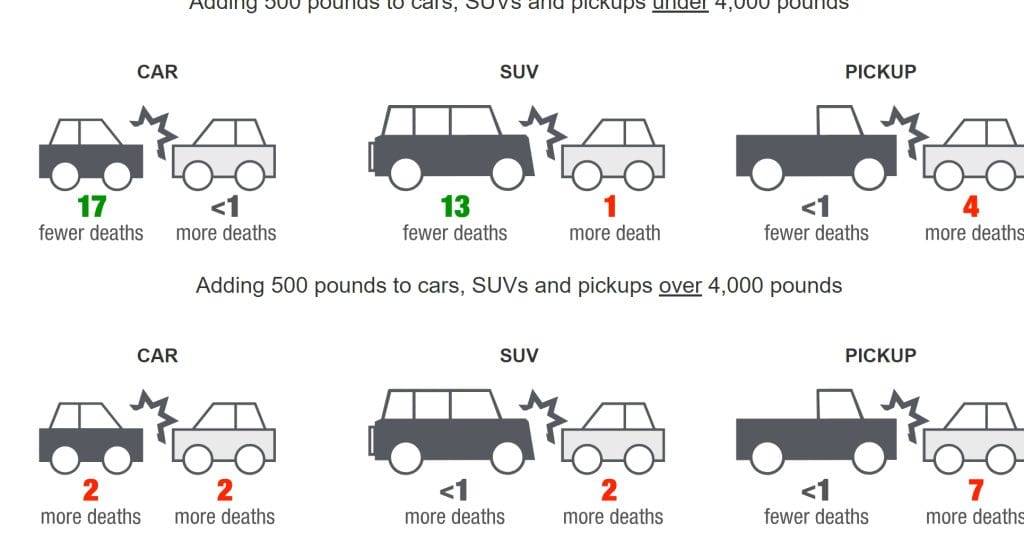
“For American drivers, the conventional wisdom is that if bigger is safer, even bigger must be safer still,” said IIHS President David Harkey. “These results show that isn’t true today. Not for people in other cars. And — this is important — not for the occupants of the large vehicles themselves.”
The study examined two-vehicle crashes involving 1- to 4-year-old cars, SUVs, and pickups from 2011–16 and 2017–22. It found that adding 500 pounds to lighter-than-average vehicles substantially reduces driver death rates, with minimal added risk to others. However, the same weight increase in heavier vehicles offers little additional protection to occupants while significantly increasing the risk to people in other cars.
IIHS’s findings highlight improvements in vehicle crash compatibility, thanks to structural changes in SUVs and pickups since 2009. These modifications, including better alignment of energy-absorbing structures and the addition of side airbags, have made larger vehicles less hazardous to smaller cars. In fact, the risk of fatal crashes involving heavy SUVs (over 5,000 pounds) dropped from 90% higher than car-to-car crashes in 2011–16 to just 20% higher in 2017–22.
Despite these advances, pickups remain more dangerous to car occupants compared to SUVs. Pickups were 2.5 times more likely to cause fatalities in 2011–16, though this has improved to less than twice as likely in recent years.
The study also revealed that vehicles heavier than 4,000 pounds—the average passenger vehicle weight—do not provide significant additional safety for their occupants but pose greater risks to others. “There’s nothing magical about 4,000 pounds except that it’s the average weight,” noted Sam Monfort, IIHS senior statistician and lead author of the study. “Choosing an extra-heavy vehicle doesn’t make you any safer, but it makes you a bigger danger to other people.”
As average vehicle weights have risen, cars and SUVs have become closer in size, enhancing crash compatibility. However, pickups have grown larger, with 97% of late-model pickups now weighing over 4,000 pounds. Harkey emphasized, “It’s a positive development that cars and SUVs are now closer in weight. These numbers show that transitioning to lighter pickups could have big benefits too, especially since many drivers don’t use their trucks for carrying heavy payloads.”